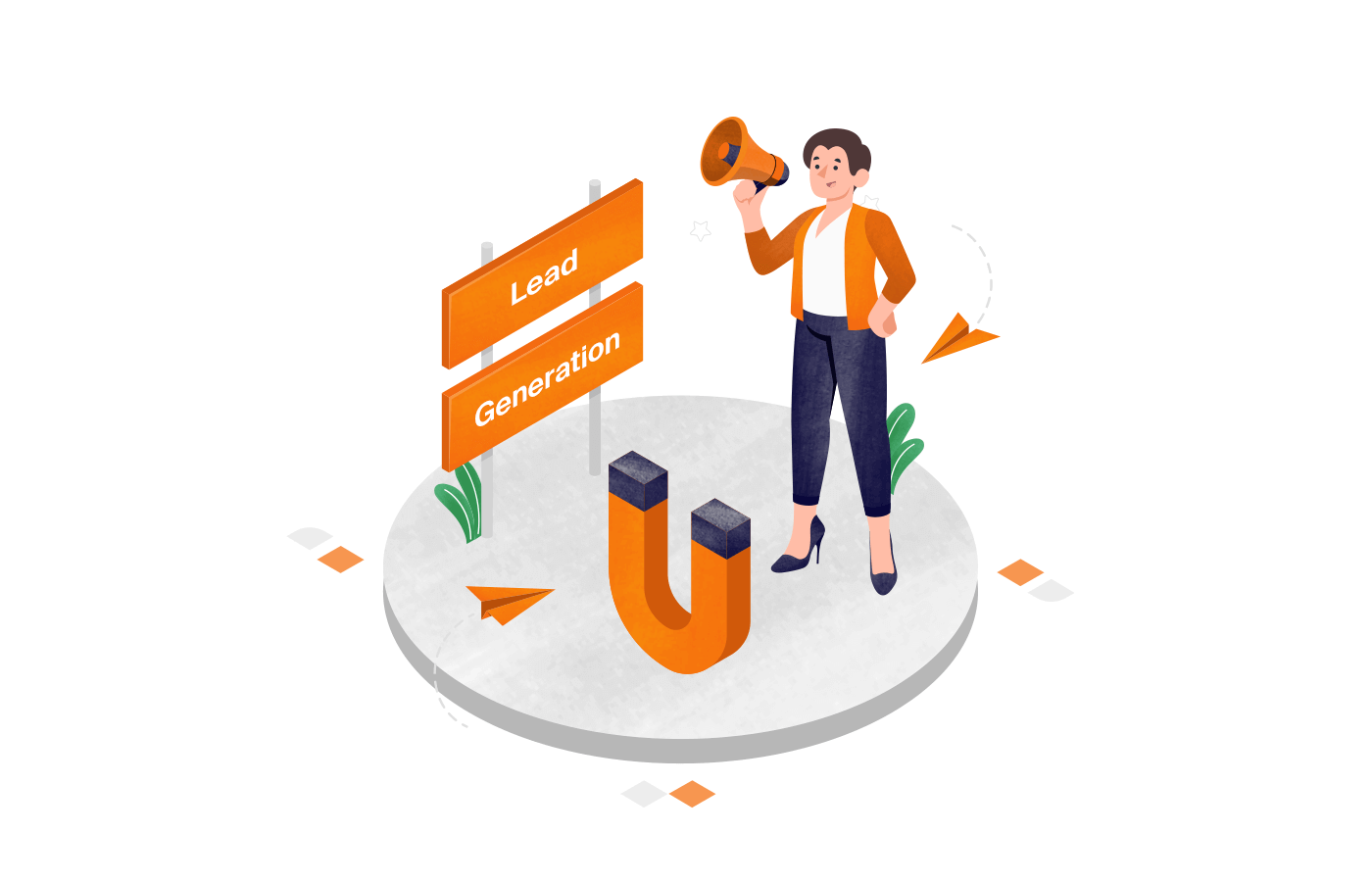If there’s anything that every business owner loves — it’s access to high-quality leads. An effective lead generation funnel helps keep a business on its growth trajectory.
Lead generation funnels can put nurturing on autopilot and assist your sales efforts well when planned. In this blog, let’s discuss lead-generation funnels and how to build one that works for your business. So, let’s begin.
What is a Sales Funnel?
Before looking at a lead generation funnel, it’s important to understand the sales funnel. A sales funnel is a visual representation of the customer journey, from when a prospect is unaware of your product to when they make a purchase. The sales pipeline or funnel filters out non-serious prospects at each stage of the buyer’s journey.
The different stages include:
- Awareness. At this stage, a prospect is introduced to your brand (or becomes aware of you). This may be because they saw an ad, visited your blog, or interacted with any marketing material.
- Interest. The interest stage includes the prospects who already know your product and have shown an active interest in your product/service offering. They might have signed up for a free trial or newsletter or engaged in another way.
- Consideration. These prospects are already evaluating your products along with your competitors. At this stage of the sales process, the prospects read reviews, compare features/benefits, find social proof, etc. They’re planning to buy a product or service and do due diligence.
- Decision. The prospects at this stage are ready to buy your product or service. They might ask for a demo or want to speak to a sales rep to finalize their purchase.
- Action/Conversion. At this stage, a prospect becomes a customer and purchases.
- Retention and Advocacy. Your work doesn’t end at converting a prospect or customer. You must make onboarding and user experience seamless so that a customer becomes satisfied, stays with you, and even refers you to others. This is essential to increase customer lifetime value and build a positive image or word-of-mouth.
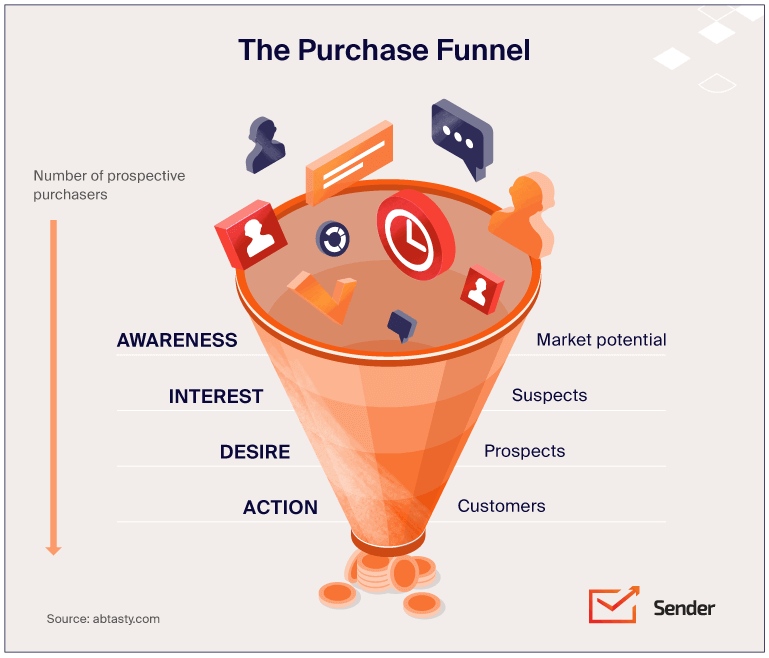
What is a Lead Generation Funnel?
Now that you understand what a sales funnel looks like, let’s look at a lead generation funnel.
A lead generation sales funnel is a specialized funnel designed to attract potential customers (also known as leads) and nurture them into paying customers. A lead generation funnel divides the sales funnel into three stages: top of the funnel, mid of the funnel, and bottom of the funnel.
The primary objective of a lead generation funnel is to capture the contact information of interested individuals and nurture them to become customers. Based on the typical stages, here’s what the different stages of a lead generation process look like:
- Top-of-the-funnel. This part corresponds to the awareness stage of a sales funnel. Here, the goal is to grab attention via marketing, offer relevant informational content, and capture the lead via sign-up forms, gated content, popups, or lead magnets.
- Middle-of-the-funnel. This stage corresponds to the consideration and decision stage, where businesses must nurture leads to build trust and credibility and showcase expertise and value in their offerings. The stage also includes several lead nurturing and lead scoring tactics to ensure that the most qualified leads convert into actual customers.
- Bottom-of-the-funnel. This stage targets the decision, conversion, and advocacy stage, focusing on helping customers decide and offering a delightful onboarding experience. This is done to ensure that they stay a loyal customer and promote the brand or business in their circles, improving customer satisfaction scores and driving word-of-mouth marketing. This stage can also include upselling and cross-selling tactics to increase the customer’s lifetime value.
Lead generation funnels can be as simple as a 3-step process to elaborate approaches that require a week to qualify and convert a prospect into a customer. Everything depends on the industry you’re in, your business goals, and the target audience.
Whatever it may be, a lead generation funnel is considered the best way to capture leads, nurture and guide them toward becoming loyal customers.
Types of Lead Generation
In the world of sales and marketing, leads are generated in two ways: prospects contact you themselves, or you target them via different marketing channels. Let’s look at both types one by one.
Inbound Lead Generation
Inbound lead generation happens when prospects find your business and inquire about your products or services.
For example, you publish informative content on your blog, which gets discovered by a prospect searching for the same problem.
Once they find a solution, they might get curious about your business or product offering and want to contact you. Add a live chatbot or popup form to your blog page to capture their email address. The prospects who submit their emails are leads that enter your inbound lead generation funnel.
Outbound Lead Generation
Outbound lead generation involves taking a proactive approach by actively reaching out to potential customers. Instead of waiting for them to discover your website or blog, outbound strategies enable you to find and engage with them before your competitors do.
To initiate this process, it’s crucial to create a buyer persona. Developing it helps identify the professional attributes of your target audience, such as their workplace and role.
With a clear understanding of your target audience, you can implement an effective outreach strategy to initiate conversations and build relationships with potential leads.
Outreach strategies may include email marketing, cold calling, social media outreach, or networking events. Outbound lead generation allows you to be proactive and directly engage with potential customers, increasing your chances of generating qualified leads and conversions. However it’s important to tailor your outreach strategy based on the preferred communication channels of your target audience.
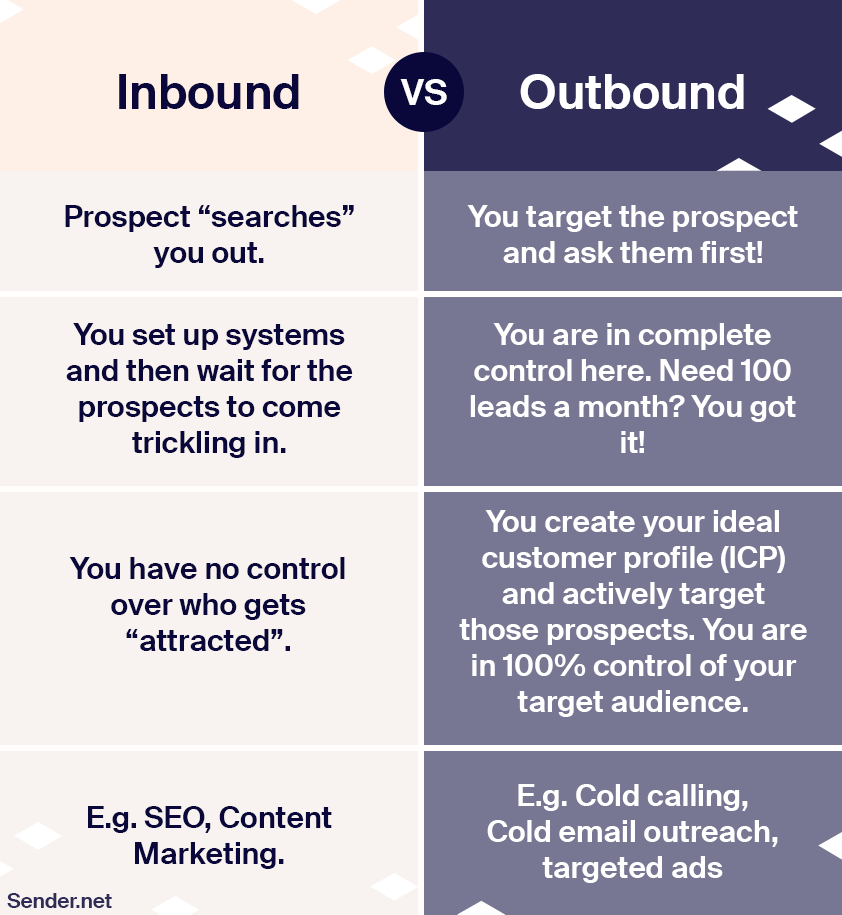
Lead Generation Funnel Stages
Depending upon how aware the prospective customer is of their problems and of your product that solves them, they could find themselves in any of the following three stages:
ToFu – Awareness Stage
ToFu stands for Top of the Funnel. Leads at this stage are at an early stage of awareness. They may have just discovered your brand or encountered a problem that needs solving.
So, generally, they’re unaware of you or your product. They’re trying to solve their problem and might encounter you because of your inbound or outbound lead generation activities.
Some examples of leads at the ToFu stage include:
- Social media followers who have liked or followed your page but haven’t shown significant interest beyond that;
- Blog visitors who found your content through a search engine but haven’t engaged further;
- Event attendees who interacted with your brand briefly at a trade show or conference.
These leads are often considered ‘cold’ as they have limited familiarity with your business. In the TOFU stage, your goal should be to attract and capture the attention of these leads, provide valuable content, and educate them about your industry, products, or services.
You want to build trust and establish your brand as an industry authority. Common tactics include publishing relevant and valuable blog posts, social media content, videos, eBooks, or infographics. And then trying to capture their email address/contact to nurture them.
MoFu – Engagement & Consideration Stage
MoFu stands for Middle of the Funnel. Leads at this stage have progressed from the initial awareness stage and are now actively seeking a solution to their problem.
MoFu leads have shown interest and engaged with your brand already, considering different options. These leads are considered ‘warm’ leads.
Some MoFu lead examples include:
- Subscribers who have opted in to receive your newsletters or email updates;
- Prospects who have downloaded a specific lead magnet, guide, or resource from your website;
- Attendees who have registered for a webinar or seen a demo.
At the MOFU stage, you aim to further nurture these leads by providing targeted and relevant information that helps them evaluate their options. You want to showcase the unique value proposition of your products or services and address their pain points. Lead nurturing tactics include email drip campaigns, case studies, webinars, product comparisons, and personalized consultations.
BoFu – Decision Stage
BoFu stands for Bottom of the Funnel. BOFU leads are at the final stage of the sales funnel and are ready to make a purchase decision.
They’ve already evaluated their options, are actively considering your offering, and are close to converting into customers.
Some BoFu lead scenarios include:
- Prospects who have requested a quote or pricing information.
- Trial users who have tested your product or service.
- Leads who have engaged in direct communication with your sales team.
These leads are considered “hot” leads, and your goal should be to put in your everything to convert these leads into paying customers. Sales enablement practices, incentives, and prompt support by sales reps help convert such leads into customers. Companies use personalized sales calls, demos, free trials, discounts, testimonials, or customer success stories to convince prospects to buy from them at this stage.
How to Build a Lead Generation Funnel?
Generating and nurturing leads require a streamlined and structured process. The process must align with your business growth goals and be based on a solid understanding of customer expectations. Here are seven steps to building a lead generation funnel:
Step 1. Map Your Customer Journey
Understanding the customer journey is crucial for effective lead generation. By identifying the different stages a potential customer goes through, such as awareness, consideration, and decision, you can tailor your marketing efforts to meet their needs at each point.
Here’s how you can map your customer journey:
- Understand the different stages a potential customer goes through before making a purchase;
- Identify touchpoints and interactions they have with your brand during each stage;
- Categorize each interaction into stages of the sales funnel;
- See where you can enhance their experience, delight them, or add more value to their life.
Here’s an example of a customer journey map by Spotify:
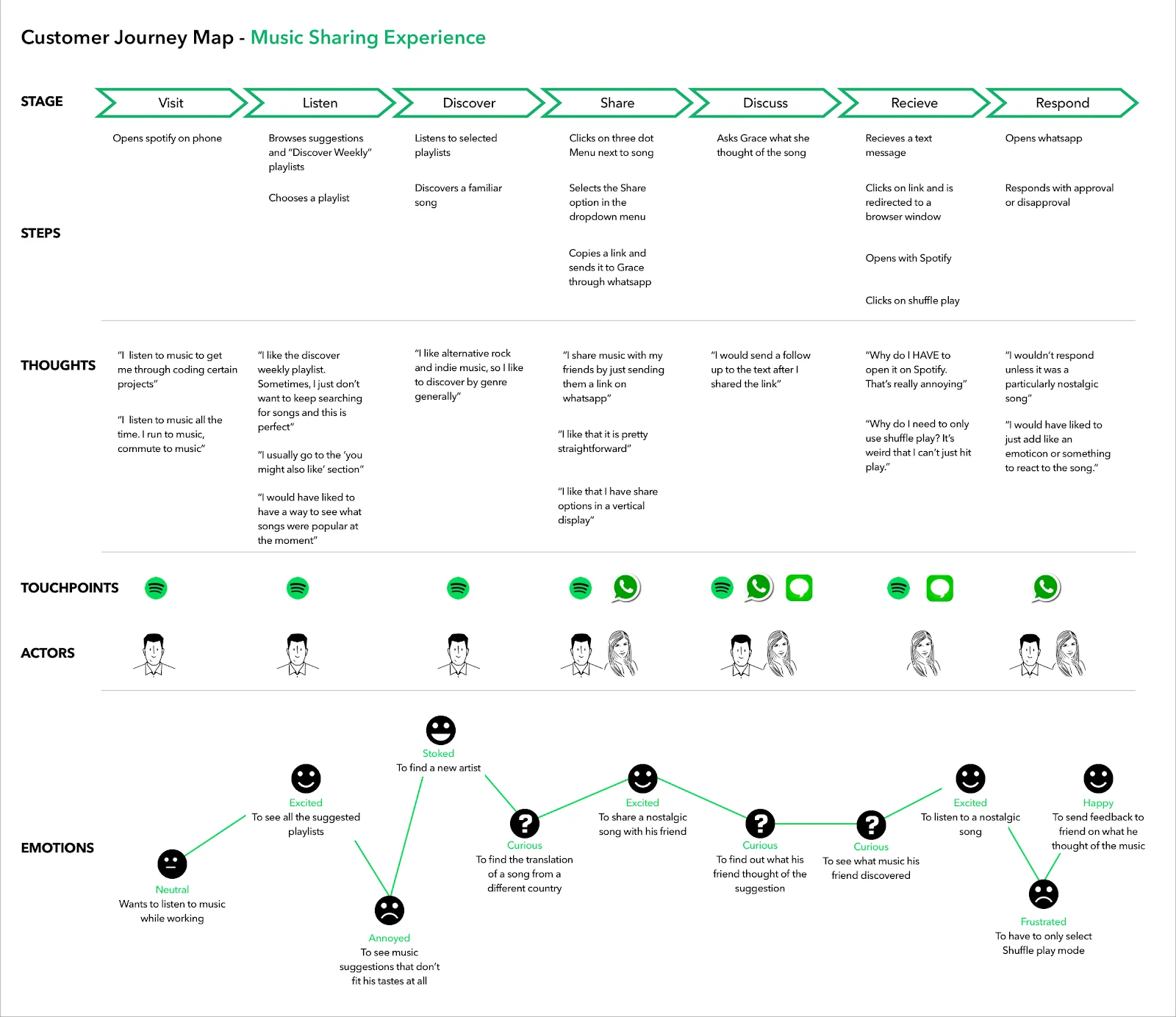
The customer journey map aimed to understand where to add music-sharing features to enhance the customer experience. Based on the customer journey map, Spotify decided to identify and solve a critical customer pain point.
Step 2. Create a Buyer Persona and/or Ideal Customer Profile (ICP)
Developing a buyer persona helps you create a clear picture of your target audience. This document should tell you everything about the prospect you happen to be targeting — likes and dislikes, fears and frustrations, hopes and ambitions, etc.
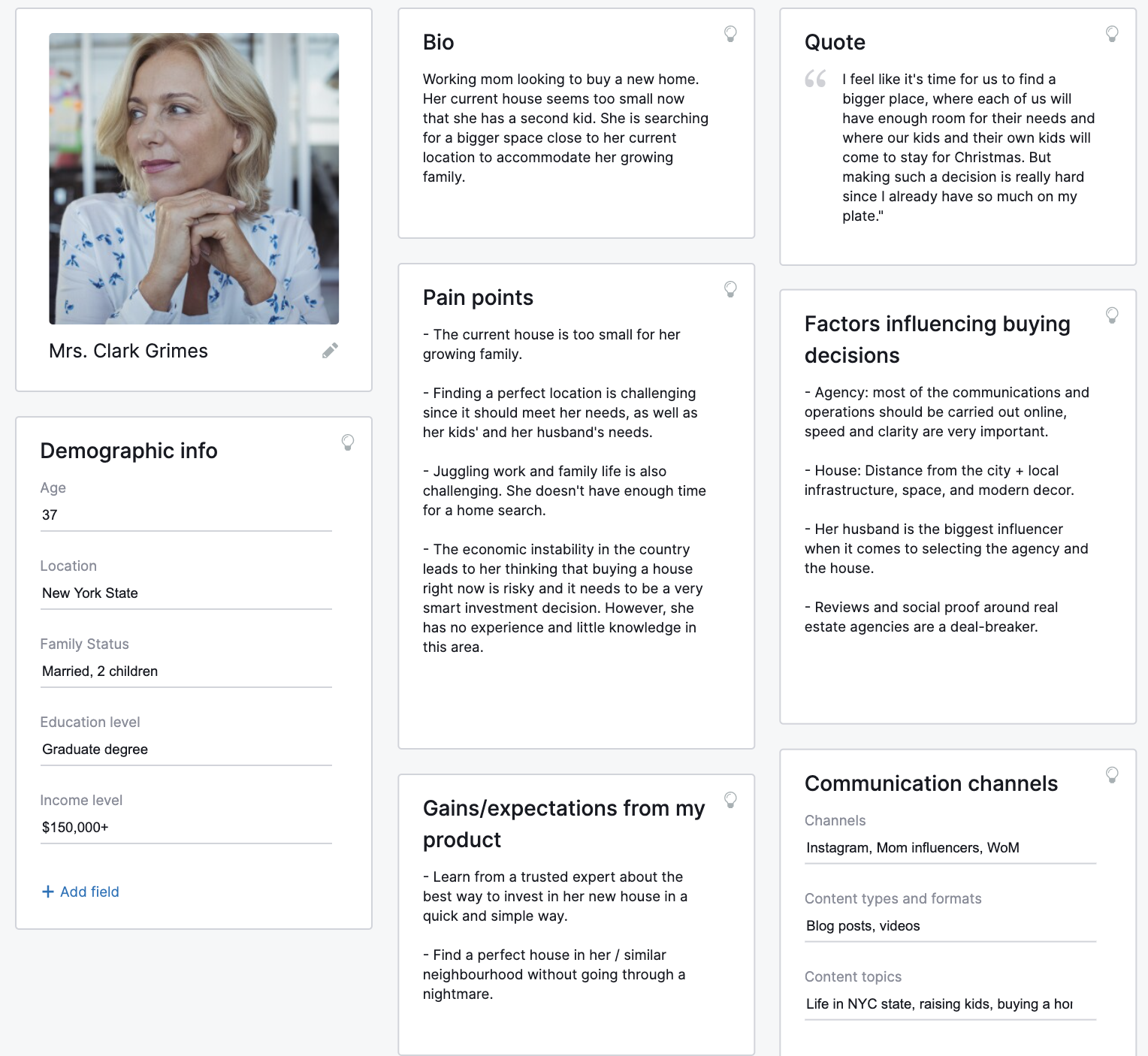
Developing buyer personas helps you understand how to target your prospects effectively in terms of content, marketing channels, and communication.
Here’s how to get started:
- Describe your ideal customer in your own words;
- Reach out to people like your ideal customer or prospect from your email list or public platforms;
- Collect information about their interests, behaviors, and motivations;
- Write down the things that impact their buying behavior, their needs and motivations along with their interests;
- Use everything you gathered to create a persona document of everything you know about them.
Remember, your buyer’s persona should consist of the following:
- Demographic information (such as age, gender, income level, and occupation)
- Psychographic information (such as personality traits and values)
- Behavioral information (such as preferred online and offline media)
Step 3. Create Useful Content for the Buyer’s Persona
Creating valuable content is essential for attracting and engaging potential leads. Your content should add value to a reader’s life.
When creating content, it’s crucial to focus on providing real value to your audience. Address their pain points, offer practical solutions, and demonstrate your expertise. This will help establish credibility and build trust with potential leads.
You can create blog posts, videos, and lead magnets such as eBooks, host podcasts, etc. Always remember to create content in a format/platform visited by your ideal customer frequently. For example, if your prospects love to hang out on YouTube to find answers to their problem, you should launch a YouTube channel.
By offering informative blog posts, videos, ebooks, and other resources, you position yourself as an expert in your industry, provide solutions to your audience’s problems, and try to compel them to contact you.
Step 4. Drive Traffic to Your Content Resource
Once you’ve created useful content for your audience, you must promote it through social media, email marketing, newsletters, guest blogging, social media posts,
SEO or other tactics to drive traffic and attract potential customers.
The choice of platforms to drive traffic depends on your target audience, the kind of content, and your goals. For example, if you’re into B2B lead generation, you should try using LinkedIn for your marketing efforts.
While deciding about it, leverage your buyer persona to determine the most effective channels for reaching your target audience. The platform where your audience spends the most time should be your first preference.
Step 5. Collect Leads
Once you’ve attracted visitors to your content, it’s time to capture their contact information. Typically, there are two ways to do so:
- Offering the content as a gated download (in return for an email or contact details) or;
- Allowing prospects to consume the content for free and asking for their information if they like it and need more information.
Create lead capture forms, email opt-ins, or offer other incentives that provide value in exchange for their details. This allows you to nurture leads further by initiating further communication via email.
Remember to use compelling calls-to-action (CTAs) and embedded forms/popups on your resource pages to capture leads effectively.
Use Sender‘s functional and feature-rich signup forms for capturing leads. Add them to your website, collect email addresses from willing prospects, and start nurturing them using marketing automation tools.
Here’s how you can build a popup form using Sender:
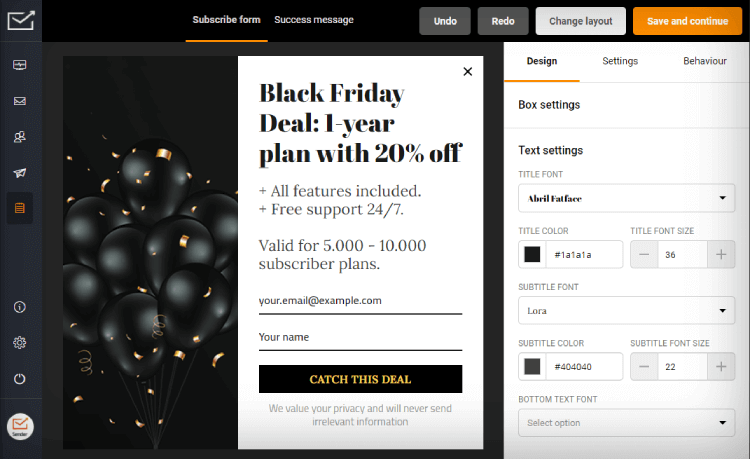
Step 6. Lead Nurture
After collecting leads using signup forms, nurture them through targeted email marketing campaigns or other marketing tactics. The best way is to send them personalized and relevant content based on their interests, interactions, and pain points.
You can plan drip campaigns, newsletters, exclusive offers, or educational series to provide additional value and build a relationship that convinces them to purchase.
When you choose email marketing to nurture leads, keep the following in mind:
- Score and segment your leads. Consider implementing lead scoring and segmentation techniques to improve the chances of conversion. Assign scores based on engagement levels and prioritize leads showing higher interest levels. Segment your leads into different groups based on demographics, behaviors, or preferences, and tailor your communication accordingly.
- Implement A/B testing and data analysis. Continuous testing and analyzing the performance of your lead generation funnel (and email campaigns) are essential for optimization. Conduct A/B tests on elements such as headlines, call-to-action buttons, or email subject lines to identify what resonates best with your audience. Use analytics to track conversion rates, engagement metrics, and customer journey insights to make data-driven decisions.
- Optimize your lead capture forms. Keep your forms concise and easy to fill out when collecting leads. Request only essential information and make the process frictionless. Experiment with different form layouts, placement, or incentives to maximize form conversions.
- Personalize your communication. Personalization goes a long way in building relationships with leads. Address them by name in your emails, tailor content recommendations based on their preferences, and utilize marketing automation tools to deliver personalized messages at scale.
Did you know?
Sender lets you send highly personalized emails – drip campaigns, triggered emails (e.g., birthday), email blasts, welcome emails, and powerful autoresponder sequences to nurture anyone not ready to buy.
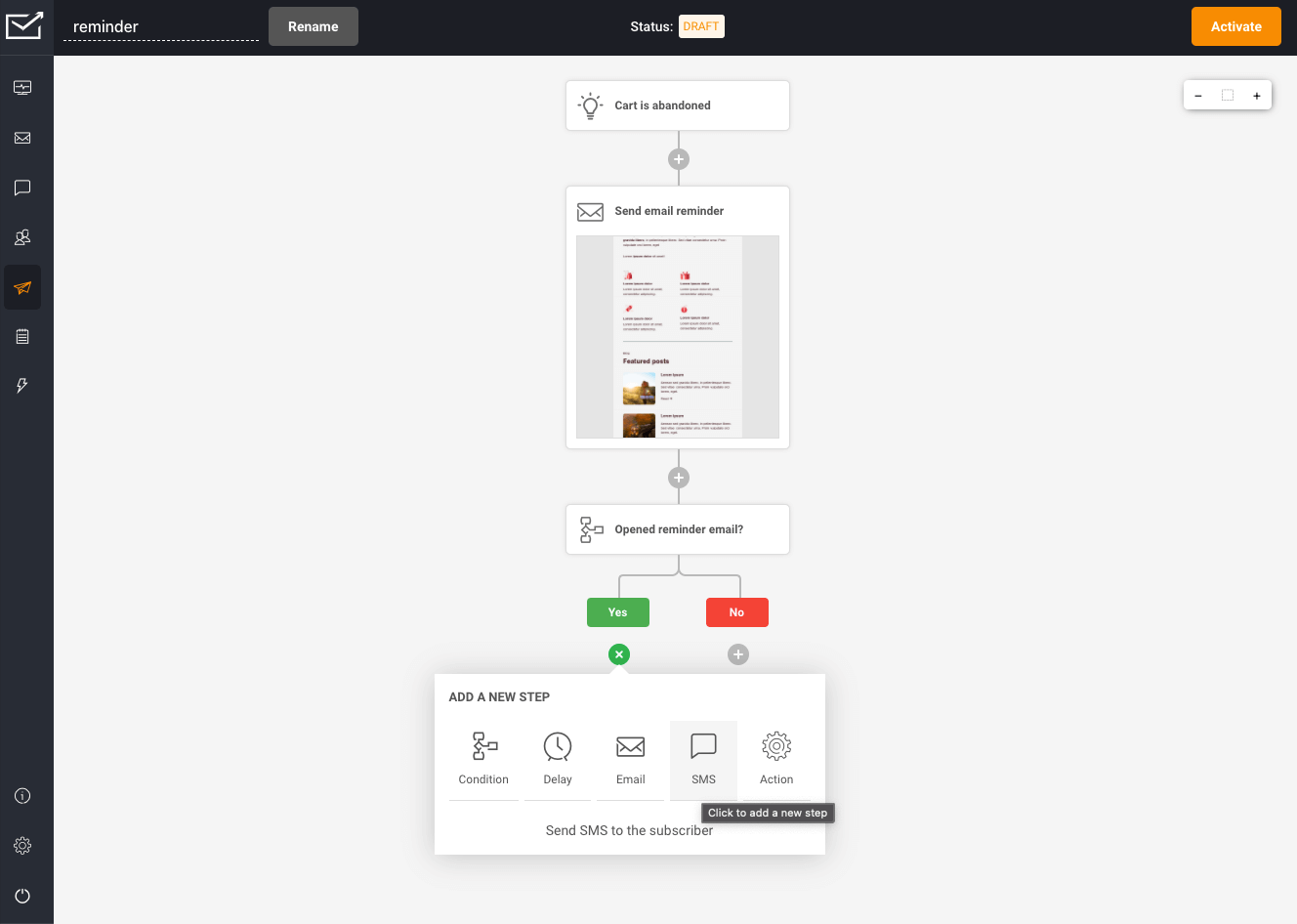
Step 7. Move to the Sales Team for Closure
Once leads are sufficiently nurtured and have shown buying intent, pass them to your sales team for personalized follow-up. The sales team helps address specific questions, overcome objections, and guide leads toward making a purchase.
Companies usually ask sales reps to schedule a demo, offer a consultation, or provide a free quote to sales-qualified leads (SQLs). This guides a lead toward making a final purchase decision and closing the sale.
Collaboration between your sales and marketing teams is vital here. You should also create an open feedback loop for your sales team to understand which leads are converting and gather insights on customer objections or feedback. This feedback loop helps align marketing efforts with sales goals and optimize the lead generation funnel.
Remember, building a successful lead generation funnel is an ongoing process that requires continuous learning, adaptation, and optimization. By experimenting with new strategies and consistently providing value to your audience, you can enhance the effectiveness of your lead-generation efforts and drive business growth.
Key Takeaways
- Always qualify your sales lead funnel before nurturing them;
- Use an omnichannel marketing approach to generate leads and nurture them through SMS, email, and other platforms;
- Optimize your lead funnels based on engagement and interaction data periodically;
- Use marketing automation tools to automate different parts of your lead generation process.
Also read:
- 5 Lead Generation Strategies to Swear by
- Email Marketing Lead Generation: Best Practices & Strategies
- 9 Best Lead Generation Software in 2023 (Free and Paid Tools)
Author bio
Anmol Ratan Sachdeva is a content marketer and small business consultant who has a strong grip on topics like marketing automation, email marketing, and content marketing. He loves to write about starting, improving, and growing a business.
